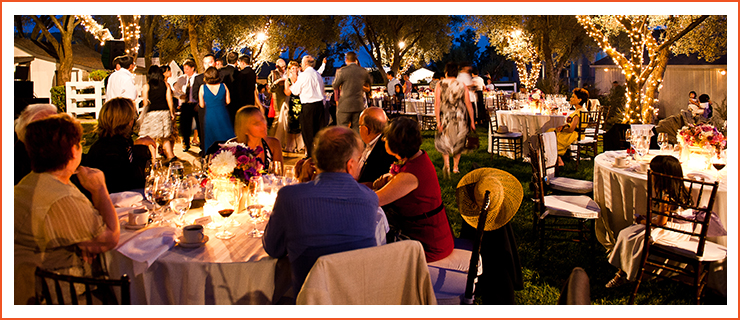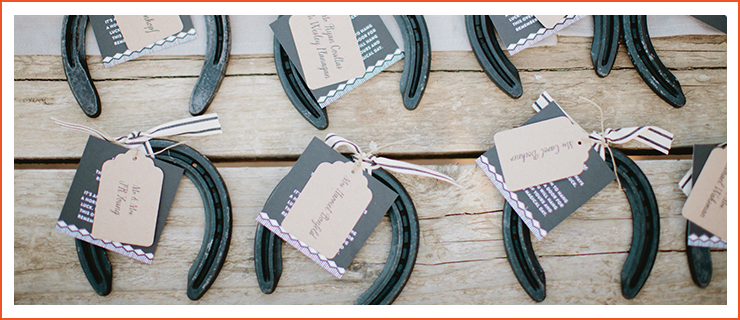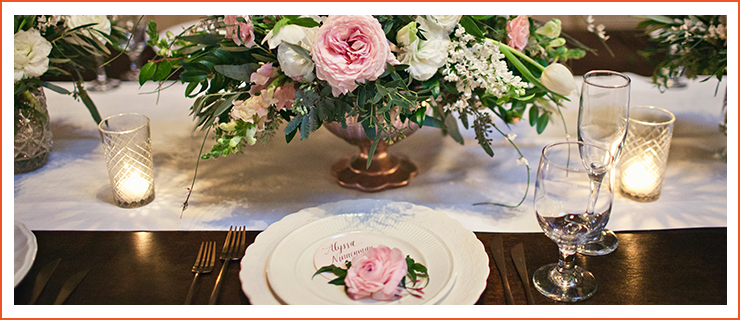It’s all coming together—RSVPs are rolling in and you’re getting down to the real nitty-gritty of wedding planning. The day is in sight! But here comes the seating chart—a juggling of unique personalities, relationships and family dynamics. Luckily, planning the seating arrangement doesn’t have to be a stressful undertaking. A vast selection of seating chart traditions and wedding stationery streamline the dinner process; it’s just about understanding what’s best for you and your unique celebration.
Overall, choosing the best seating chart for your wedding comes down to three main things: number of guests, the shape of your venue and the energy of your celebration. During your site visit, discuss the best layout options with the planner, noting your vision for the evening. The following wedding table options and helpful etiquette tips will help you design the most successful seating chart for your big day.
Wedding Table Varieties

Round Tables: The most traditional option, round wedding tables fit six, eight or 10 guests. Fewer than six or more than 10 makes for difficult spacing during dinner. Also remember that too many tables in a space can break up the flow of the room. At least 60 inches should separate each table so guests can come and go freely.
Rectangular Tables: Evoking a rustic energy, both short and long rectangular tables are a great option for indoor and outdoor celebrations. Keep in mind that this changes the direction of conversation throughout dinner, guests are more likely to chat with those across from them opposed to a group at a round table, where the view is wider. On the other hand, this layout removes confusion when seating small pockets of social groups.
Sweethearts Table: As hosts of the evening, you and your spouse have the option to sit at the head of the room. This accomplishes a few things: it provides a secluded space to eat dinner and privately chat post-ceremony, it removes the question of who sits with the couple and it provides a focal point for speeches and photography.
Wedding Party Table: Keep your bridesmaids and groomsman by your side throughout the evening with a wedding party table. The groomsmen and bridesmaids traditionally alternate boy-girl at a long rectangular table at the head of the room. Just keep in mind that some wedding party members may have dates outside the group, so discuss the best option with your party beforehand.
Seating Chart Etiquette

Traditionally, the couple’s parents take a prominent spot in the room, often sitting with the bride and groom at the head table itself. Parents also commonly sit with immediate family and the officiant at a table close to the couple.
As for meshing family and friend groups, there is rarely an even, straightforward answer. Try to be conscious of preferences when possible, but remember that guests only stay at their table for a fraction of the evening. As for smaller groups or singles, place them with a particularly outgoing table with similar interests, and conversation will develop naturally.
Areas of the Room
Each area of the reception space has a different personality. Sitting close to the dance floor or bar will be busier and louder—a spot more appropriate for those taking part in both. Especially consider room layout when seating older guests, and keep things like stairs, restroom location and proximity to the couple in mind. When in doubt, begin with these less-negotiable seating placements—this will help you fill in the remaining guests.
Seating Children
Kids add a wonderful energy to a reception, and correct seating makes all the difference to a successful night. If the children are old enough to sit at a kids-only table, place them at a table next to the majority of their parents or caretakers. This way both parties can flow between to the spots with ease. For the tinier members of the wedding, inquire about either leaving a space at the table or bringing in a highchair for dinner.
Guiding Your Guests
Depending on the formality level of your wedding, many stationery options exist for guiding your guests through the evening. Escort cards, place cards or a seating chart display removes the guesswork from cocktail hour to dinner. Cutting down on decision making allows guests to focus on the celebration, and cuts out questions for the couple and planner.
Getting Started

Once you’ve set your layout and guest list, begin building the seating chart. If you prefer to work off paper, use our wedding seating printables that you can print based on any of the most common seating options listed above. Print multiple pages of your desired tables, cut them out and then customize using your guest list with with guest names and table numbers. You can even glue it to a large poster board to roll up and store to revisit while you knock out all your wedding planning essentials.

Constructing your seating chart is a thrilling final stage to the wedding planning process. Blend these layout and wedding etiquette tips to build an evening that flows seamlessly from dinner to dancing.





